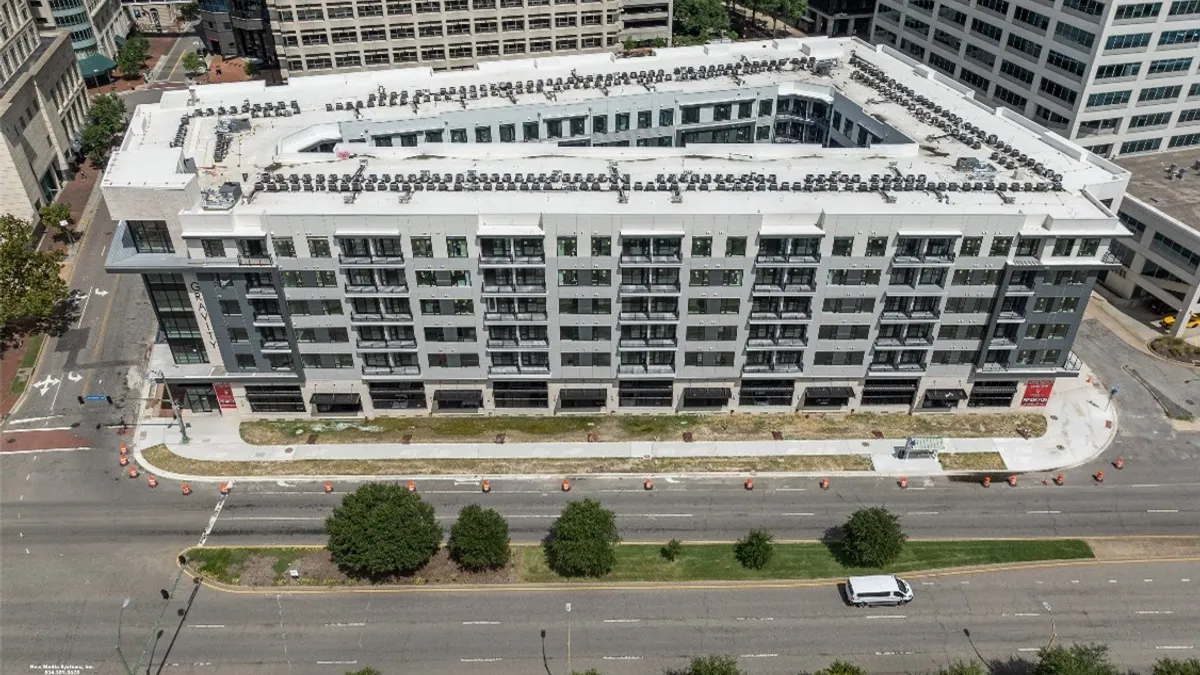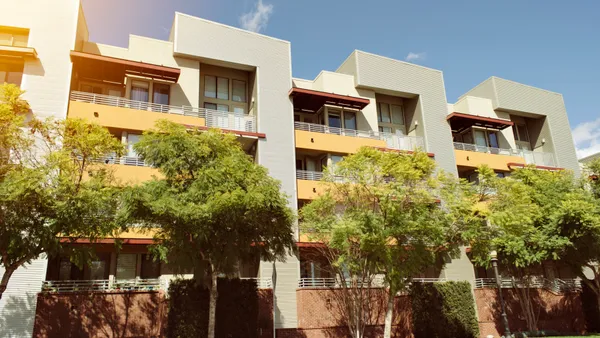Dive Brief:
- Building material prices fell by 0.2% in October, continuing a pattern of declines over the past five months, according to the latest Producer Price Index as reported by the National Association of Home Builders.
- At the commodity level, prices fell for almost all of the materials needed to construct new residential buildings — except for ready-mix concrete, which rose 0.4% in October.
- This downward pattern follows 18 months of record-breaking price gains in building materials, said David Logan, senior economist and director, tax and trade policy analysis at the National Association of Home Builders, spurred by surging inflation, supply chain issues and high demand.
Dive Insight:
“Year over year, all the different product prices are probably an average of 15% higher," Logan told Multifamily Dive. "That's about four to five times the average 12-month increase, going back in some cases to the '70s.”
Prices started to fall as the Fed began raising interest rates early this year, Logan said. However, concrete products have bucked the trend, including precast concrete, for which price gains have only recently slowed, and pre-stressed concrete, which has risen 30% YOY and 50% in the last 18 months.
Logan attributes concrete's price increases to the closure of a major supply source in Mexico earlier this year, when the government revoked the permit for a large quarry owned by a U.S. firm.
“[This source] supplied a lot of crushed stone — all the inputs to ready mix concrete to the Southern and Western United States,” Logan said. “That’s led to builders [in the South] getting concrete from Canada instead.”
Another potential influence is the passing of the Infrastructure Investment and Jobs Act, which was signed by President Joe Biden in November 2021.
However, it’s also hard to pinpoint any one cause of concrete's higher costs, according to Logan. “Projects are so decentralized across the country that it's hard to come to a definite conclusion about whether [the act] has contributed to the increase. But it certainly wouldn't help prices decline,” he said.
While there is no particular shortage of concrete, Logan said, the prices of concrete sewer and water pipes used in residential construction are on the rise.
“You can get around shortages of certain materials by changing how you build, but this is one where that's not an option,” said Logan. “The cost of development is increasing, which makes it harder to build anything.”











